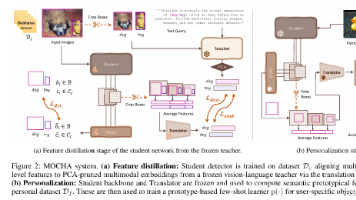深入理解逻辑回归(logisitc regression)
逻辑回归(logisitc regression)逻辑回归(logisitc regression)1.逻辑分布2.逻辑回归模型概念3.极大似然估计4.代价函数与损失函数5.对数几率(log odds)6.梯度下降7.LR如何处理过拟合问题?8.多分类问题9.总结1.逻辑分布定义:连续变量X服从逻辑分布,分布函数表示为:F(x)=11+e−(θ...
逻辑回归(logisitc regression)
1.逻辑分布
定义:连续变量X服从逻辑分布,分布函数表示为:
分布函数图形为S形曲线,即为Sigmoid Logistic Function,表示为下图:
在实际应用中,F(X)函数表示为
2.逻辑回归模型概念
a.假设有模型 P(Y=1|x)=F(x)=11+e−θTx P ( Y = 1 | x ) = F ( x ) = 1 1 + e − θ T x <script type="math/tex" id="MathJax-Element-3">P(Y=1|x)=F(x)=\frac{1}{1+e^{-θ^Tx}}</script>在已知输入x的情况下,判断此输入为1类的概率是多少。
b.而在此概率模型中,若想求得概率P,只有参数 θT θ T <script type="math/tex" id="MathJax-Element-4">θ^T</script>不知道。
c.如何求得参数 θT θ T <script type="math/tex" id="MathJax-Element-5">θ^T</script>,就需要估计参数值。参数估计方法则采用在模型已知,参数未知的情况下的极大似然估计。
d.若采用极大似然估计方法来估计参数,那么就需要给出似然函数。在整个模型训练中,似然函数如何表示?问题转化成如何表达极大似然估计函数
3.极大似然估计
(1)训练样本
假设我们有5个训练样本,样本集为
{(x1,y1=1),(x2,y2=0),(x3,y3=1),(x4,y4=0),(x5,y5=1)} { ( x 1 , y 1 = 1 ) , ( x 2 , y 2 = 0 ) , ( x 3 , y 3 = 1 ) , ( x 4 , y 4 = 0 ) , ( x 5 , y 5 = 1 ) } <script type="math/tex" id="MathJax-Element-6">\{(x_1,y_1=1),(x_2,y_2=0),(x_3,y_3=1),(x_4,y_4=0),(x_5,y_5=1)\}</script>
则要满足5个样本的总的分布概率,有:
P=P(Y=1|x=x1)P(Y=0|x=x2)P(Y=1|x=x3)P(Y=0|x=x4)P(Y=1|x=x5) P = P ( Y = 1 | x = x 1 ) P ( Y = 0 | x = x 2 ) P ( Y = 1 | x = x 3 ) P ( Y = 0 | x = x 4 ) P ( Y = 1 | x = x 5 ) <script type="math/tex" id="MathJax-Element-7">P=P(Y=1|x=x_1)P(Y=0|x=x_2)P(Y=1|x=x_3)P(Y=0|x=x_4)P(Y=1|x=x_5)</script>
要计算P的值,从而确定极大似然函数。
(2)极大似然函数
a.极大似然估计求解步骤:
- 写出似然函数;
- 对似然函数求log
- 对log函数求导数
- 令导数等于0,求参数
b.设逻辑回归模型:
则似然函数表示为:
对数似然函数为:
即要求得 l(θ) l ( θ ) <script type="math/tex" id="MathJax-Element-12">l(θ)</script>取得最大值时的θ的值。 问题转换成对极大似然函数的最优化问题。
4.代价函数与损失函数
代价函数 cost() c o s t ( ) <script type="math/tex" id="MathJax-Element-13">cost()</script>可以用对数似然函数公式(4)表示。
代价函数是用来寻找最优解的目标函数。
令代价函数 cost() c o s t ( ) <script type="math/tex" id="MathJax-Element-14">cost()</script>和损失函数 J(θ) J ( θ ) <script type="math/tex" id="MathJax-Element-15">J(θ)</script>表示为:
可以看出损失函数:
问题转换为使得损失函数最小时的参数θ的值。求损失函数极小值,采用梯度下降方法。
为了推导公式简单,在梯度下降求解之前,我们先介绍对数几率(log odds)或lofit函数
5.对数几率(log odds)
逻辑回归模型如下:
几率定义:一个事件的几率(odds)是指该事件发生的概率p与该事件不发生的概率1-p的比值 p1−p p 1 − p <script type="math/tex" id="MathJax-Element-19">\frac{p}{1-p}</script>.
对数几率即对几率求对数 logit(p)=logp1−p l o g i t ( p ) = log p 1 − p <script type="math/tex" id="MathJax-Element-20">logit(p)=\log\frac{p}{1-p}</script>.
由公式(5)、(6)得
对数几率将在下面的推导中用到
6.梯度下降
由第4部分,得到损失函数 J(θ) J ( θ ) <script type="math/tex" id="MathJax-Element-22">J(θ)</script>
梯度函数:
梯度迭代:
Repeat{
}
最终找到极小值,从而确定 θT θ T <script type="math/tex" id="MathJax-Element-30">θ^T</script>
7.LR如何处理过拟合问题?
1.什么是过拟合?
就是训练出的样本可以很好的适应所有的训练样本,但是不能对测试样本很好的预测,这就是过拟合。
2.解决过拟合的方法有两个:
(1)降维,使用PCA降维,使使得模型 θ θ <script type="math/tex" id="MathJax-Element-48">\theta</script>个数减少,次数也降低,避免了过拟合
(2)正则化。增加正则化项
对于LR添加L1正则项或者L2正则项。
L1正则化会导致参数值变为0,但是L2却只会使得参数值减小,这是因为L1的导数是固定的,参数值每次的改变量是固定的,而L2会由于自己变小改变量也变小。
8.多分类问题
多分类逻辑回归的模型为:
9.总结
- 梯度下降法实现简单,但是梯度下降求得最优解不一定是全局最优解,有可能是局部最优解,并且收敛速度不一定是最快的。
- 逻辑回归源于线性回归
线性函数=逻辑回归模型中Y=1的对数几率。
参考:
http://blog.csdn.net/chibangyuxun/article/details/53148005逻辑回归原理及过程
http://blog.csdn.net/raintungl/article/details/78188182中3.1logistic回归的极大似然估计
http://blog.csdn.net/walilk/article/details/50978864的导数与梯度下降
更多推荐
 已为社区贡献3条内容
已为社区贡献3条内容








所有评论(0)